Rommel plays with Minatures for D Day
https://www.youtube.com/watch?v=rRuzjs9T_dw&t=29s
On this day during W.W. 2
-
On March 4, 1941, British forces conducted “Operation Claymore”, a raid against the Lofoten Islands in Norway. The purpose of the raid was two-fold, first to destroy fish oil-producing factories. All the oil produced was being shipped to Germany, which extracted from it glycerine, a vital ingredient in the manufacture of high explosives, The second reason for the raid was to bolster morale in the UK in the days after the expulsion of British troops from Europe in 1940.
The attacking force was 500 men from No. 3 & 4 Commandos supported by a section of Royal Engineers of No. 55 Field Company, and four officers and 48 men of the Norwegian Independent Company 1. Their transport was provided by two former Dutch passenger ships now serving as Landing Ship, Infantry (Medium) guarded by five Royal Navy escorts from the 6th Destroyer Flotilla: HMS ‘Somali’, ‘Bedouin’, ‘Tartar’, ‘Eskimo’ and ‘Legion’. The force departed from Scapa Flow in the Orkney Islands on March 1. After refueling at the Faroes, the ships took a jog north to avoid detection by German aircraft.
When the invading force reached the Lofoten Islands about 4:30 a.m., they were surprised to see the navigation lights were still illuminated. At 6:45 disembarking started and all troops were ashore by 7 a.m. Four islands were attacked simultaneously. At Stamsund commandos destroyed the Lofotens Cod Boiling Plant; Two factories were destroyed at Henningsvær and 13 at Svolvær. In total, about 800,000 imperial gallons (3,600 m3) of fish oil were set on fire. The Allies captured 228 prisoners of war and sank nine merchant ships. The only armed opposition came from the German trawler ‘Krebs’, which managed to fire four rounds at HMS Somali before being sunk. The only British casualty was an officer who shot himself with his own revolver. The force withdrew at 1 p.m. and with them came 300 volunteers for the Free Norwegian Forces in Britain.
The biggest haul from the raid went unpublicized. The captain of the trawler Krebs managed to throw his "Enigma’ coding machine overboard before he was killed, but the British were able to seize the machine’s rotor wheels and cypher books. Their capture enabled Bletchley Park to read all the German naval codes for some time and provided the intelligence needed to allow Allied convoys to avoid U-boat concentrations.
The attached image is a Royal Navy photograph of the burning fish oil tanks seen from the decks of the destroyer HMS Legion. #WorldWarII #RoyalNavy #Commandos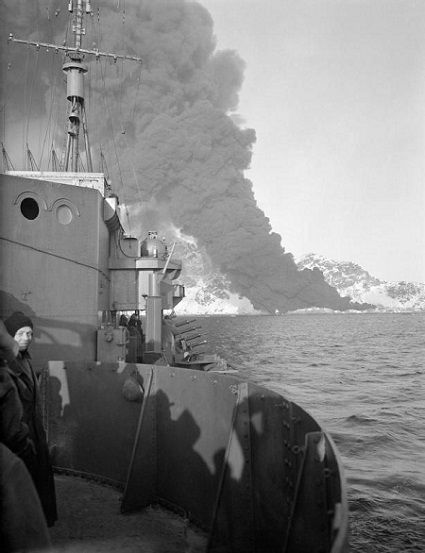
-
@captainwalker Speaking of Enigma and shipboard booty, the story of TG 22.3 and U-505 (the U-boat in Chicago) comes to mind. While they were successful in boarding and capturing U-505 (and grabbing all of the Enigma secrets on board), the Navy brass were furious about that turn of events. The brass didn’t want the Germans to wonder about the security of all the secrets passed over Enigma-encrypted comms channels. The men of U-505 were interned in a special POW camp in Louisiana and held incommunicado.
More information at: https://www.thoughtco.com/world-war-ii-capture-u-505-2361441
-Midnight_Reaper
P.S. Edit to fix spelling errors.
-
Thanks for that. I never knew the specifics of the event. Always thought it was in the north atlantic for some reason
-
March 6, 1942. Eastern Front
In the Crimea, the Soviets are reinforcing the Crimean Front under Lieutenant General Dmitry Timofeyevich Kozlov for another attempt to pierce the Axis line at the Parpach Narrows. The last attempt failed largely due to Luftwaffe supremacy, so the Red Air Force brings in 581 planes. However, the Soviet planes are largely obsolete while the Luftwaffe has current models. The Soviets also mass 224 tanks, which Kozlov decides to divide up to support individual units rather than use them as a single, powerful striking force. The Germans know the Soviets are likely to attack again, so they are laying 2000 Teller mines near the key Koi-Asan position. The Soviet attack is scheduled for 13 March.
Source: worldwartwodaily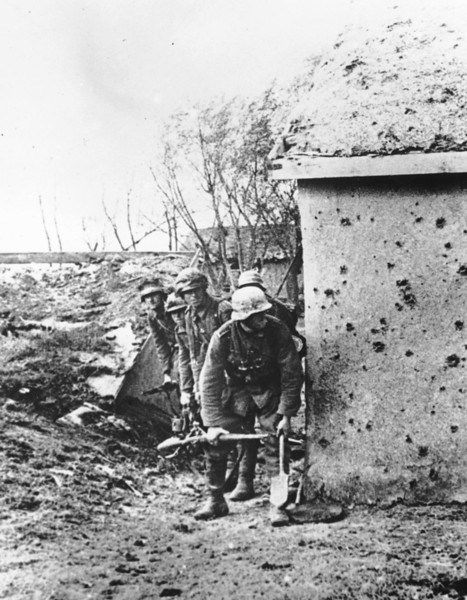
-
March 7, 1942. Eastern Front
The Luftwaffe on the Eastern Front is overstretched, and this is beginning to affect overall operations. Eighteenth Army informs the OKH that it is ready to begin Operation Raubtier (“Beast of prey”), whose aim is to re-establish the former line along the Volkhov River and thereby trap Soviet 2nd Shock Army to the west. The gap in the German lines is only about six miles wide, though the Soviet incursion bulges out to the west. Closing this gap is well within the Wehrmacht’s abilities. However, the operation depends upon strong Luftwaffe support, and it is fully engaged in supplying the trapped German garrisons at Kholm and Demyansk. Knowing that the two encircled outposts cannot survive without each day’s deliveries, Hitler postpones Operation Raubtier. The Eighteenth Army then tries to build up its forces sufficiently so that it can mount the operation with only minor Luftwaffe support, that but will take several days.
Source: worldwartwodaily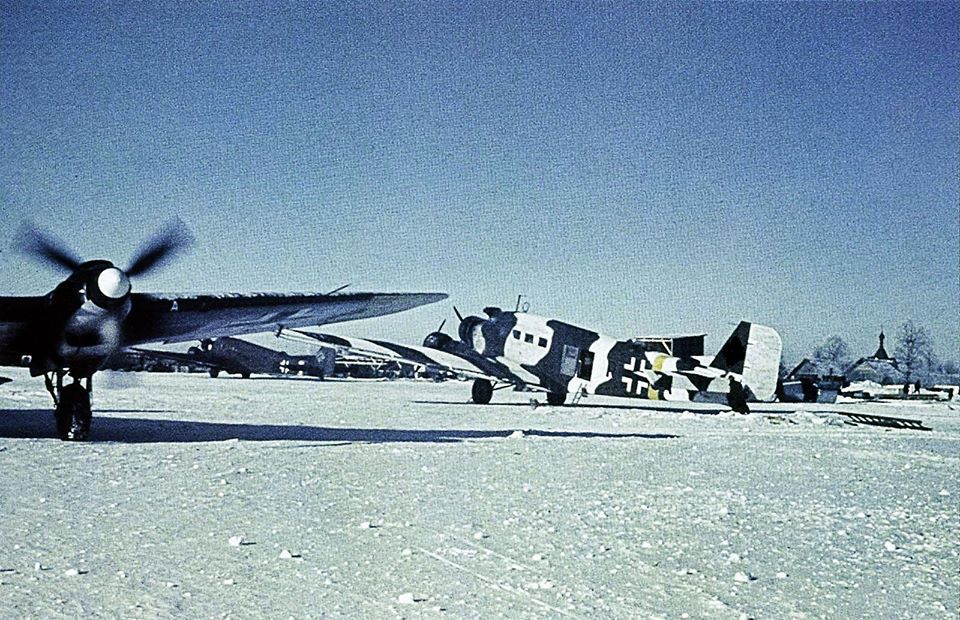
-
March 9, 1942. Eastern Front
The situation is growing critical at Kholm. The trapped German garrison, numbering almost 100,000 men, is barely surviving on each day’s flight of supplies brought in by the Luftwaffe. The relief force under Generalmajor Horst von Uckermann remains stalled virtually within sight of the pocket, blocked by Soviet KV tanks. Soviet T-34 tanks are blasting the pocket’s defences, but so far they are holding. Hitler is losing confidence in Uckermann but has no alternatives at the moment. The Luftwaffe is using all of its transport resources from the entire front just to keep the pocket from collapsing.
The Soviets under General Kozlov are preparing to resume their offensive on the Crimea. They are under strict orders from Stalin to get moving quickly, who has taken a personal interest in the situation. Kozlov’s plan is to break the German defensive strongpoint at Koi-Asan, hitting the Germans where they are strongest. The Germans also are reinforcing their positions on the Parpach Narrows with troops happy to see the first StuG units arrive in the Crimea to bolster the defence.
Source: worldwartwodaily
-
March 9, 1943 North Africa
Rommel leaves Africa for the last time. On his way home he meets Mussolini in Rome and Hitler in East Prussia. Neither is persuaded to withdraw the Axis forces from Africa.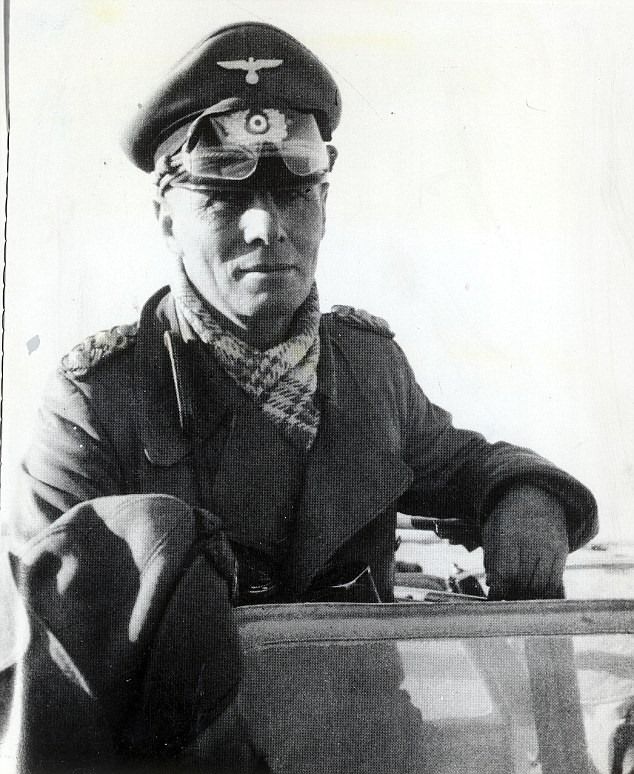
-
yea they lost as many as they did in Stalingrad. Would’ve supported him earlier woulda been a different story.
Of course being captured in Tunis was heck of a lot better than Russia : )
-
March 10, 1942. Eastern Front
German Fifth Panzer Division captures part of Soviet I Guards Cavalry Corps in a pocket south of Vyazma. After this, a blizzard hits the area which stops all movement for almost a week. The unusually heavy snowfall (even for the area) hampers the Uckermann relief attempt toward the Kholm pocket and creates dangerous icing conditions on the Luftwaffe’s planes that are keeping the pocket from collapsing.
Source: worldwartwodaily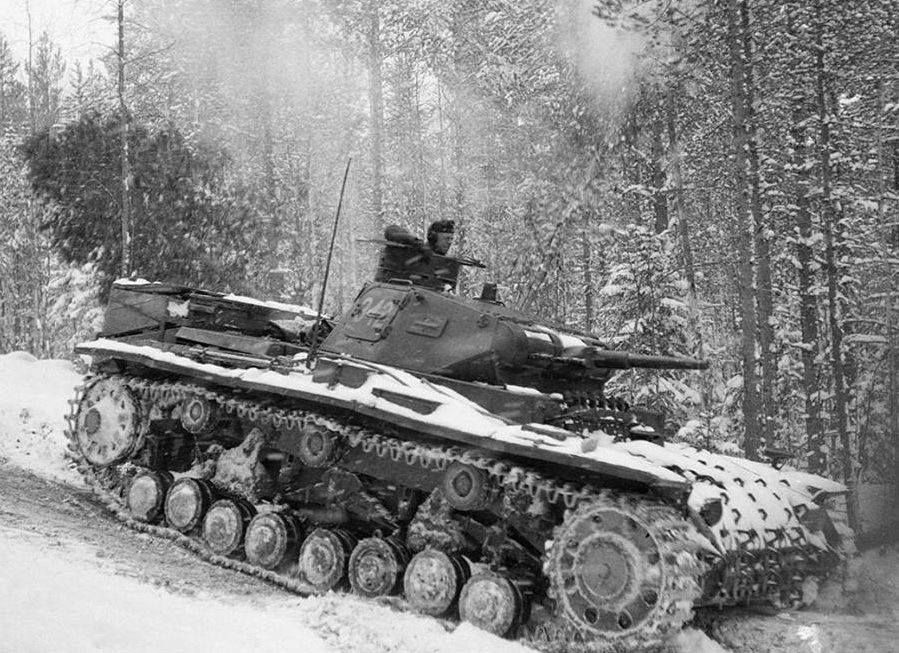
-
March 11, 1942. Eastern Front
A snowstorm on the central front that began on 10 March increases in intensity throughout the night. Travel becomes difficult. General Walter Model manages to fly through the storm to Fuhrer Headquarters in East Prussia. He is there to argue in favour of the quick start of Operation Brueckenschlag, a drive toward Oshtakov which would close a gap between Army Groups Centre and North (Brueckenschlag literally means “bridge-building”). This is an ambitious operation that, if successful, would trap six or seven Soviet armies and deprive them of a third of their gains during the winter counteroffensive. The weather is so bad, however, that today the Luftwaffe asks for a postponement of offensive operations due to severe icing conditions.
Source: worldwartwodaily
-
March 21, 1942. Eastern Front
Army Group North’s 16th Army orders it’s II Corps under the command of General Walther von Seydlitz-Kurzbach to manoeuvre through the “Ramushevo corridor” (the tenuous link between Demyansk and Staraya Russa) in an attempt to relieve the encircled troops at Demyansk. They will be met by fierce Soviet resistance on the Lovat River.
Photo: German forces near Demyansk, 21 March 1942.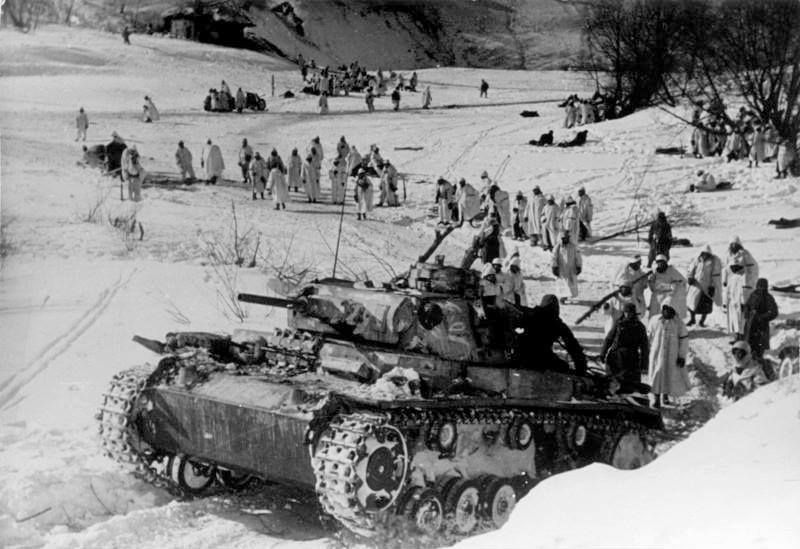
-
March 23, 1945. European Theatre
As US 3rd Army makes another Rhine River crossing near Worms, Germany, British 2nd Army and Canadian 1st Army mount a carefully prepared operation, code named Plunder, to cross the Rhine River in the area from Emmerich to just south of Wesel. There is massive artillery support, with over 4,000 Allied guns firing for four hours during the opening bombardment. Two parachute divisions are also to be dropped to aid the crossing. The operation begins at 9 PM and continues in the moonlight. Meanwhile, US 1st Army and elements of US 3rd Army are extending their bridgeheads over the Rhine. In Berlin, Adolf Hitler wants to counterattack the Allied bridgehead at Oppenheim, but he is told that no reserve forces are available to embark on such an operation.
Over Germany, US 8th Air Force attacks transportation lines and other targets with 1,244 bombers, of which seven are lost. US 15th Air Force attacks Ruhland, Vienna and other targets. US 12th Air Force attack bridges across the border from Italy. RAF Bomber Command sends 128 aircraft to attack bridges at Bremen and Bad Oeynhausen during the day, 80 aircraft to attack Wesel during the day, 65 aircraft to attack Berlin overnight, and 23 aircraft to attack Aschaffenburg overnight.
On the Eastern Front, the Soviet 3rd Belorussian Front continues assaulting into Heiligenbeil while the Soviet 2nd Belorussian Front continues blasting Gotenhafen (Gdynia) pocket and Danzig pocket. The German 9th Army makes unsuccessful counterattacks against 8th Guards Army of Soviet 1st Belorussian Front around Kustrin. Soviet 3rd Ukrainian Front batters Hungarian 3rd Army and captures Komarno and Esztergom, while Remnants of German 6th Army and 6th SS Panzer Army continue withdrawing toward Austria.
Martin Bormann orders millions of Germans to migrate from western and eastern Germany to the central part of the country; no food and transports are allocated to them, thus such a move spells certain disaster.
In Italy, General Vietinghoff takes over command of German forces, replacing Field Marshal Kesselring, who has been withdrawn to the Western Front. Throughout March there have been small attacks by both US 2nd and 4th Corps of US 5th Army in the area around the Pistoia-Bologna road and to the west.
Photo: U.S. 89th Division crossing the Rhine under fire. Colourised by Paul Reynolds
Source: World War II Daily: DDay to VEDay
-
March 24, 1941. North Africa
At 06.00 hours, German 5th Light Division attacks the Allied forward position of El Agheila, Libya. Only small forces of the British 2nd Armoured Division and 7th Australian Division are defending this key position and in any case are largely equipped with Bren gun carriers and captured Italian M13 tanks that prove to be no match for the Panzers. Under orders to retreat if attacked, 2nd Armoured Division falls back 30 miles east to Mersa Brega.
-
Fiat-Ansaldo M13/40 tanks of the VII Battaglione, 32 Reggimento Carri, Ariete Armoured Division on or about 24 March 1941, just before the Axis advance on El-Agheila. Italian troops, particularly infantry, formed a huge component of General Rommel’s successful Afrika Korps operations.

-
March 25, 1941. Battle of the Mediterranean
It is fair to say that, at this stage of the war, the Italian military has not covered itself with glory. They have been forced back in Albania, East Africa, and North Africa, while the Italian fleet largely has stayed in port. However, there is one area of the military at which the Italians are ahead of everyone: small-scale attacks at sea which can produce big results. However, so far these operations have been cancelled for various technical reasons.
That changes today. Italian destroyers Crispi and Sella each carry three 2-ton motor assault boats from Leros in the Dodecanese Islands. They head for the vicinity of the major British naval base at Suda Bay, Crete. The destroyers release the boats from about 10 miles (18 km) offshore at 23:30. The small boats proceed toward the large Royal Navy ships at anchor in the bay for an attack on the 26th. The prime target is heavy cruiser HMS York.
On land, the German Afrika Korps continues consolidating its recent acquisition of El Agheila. The British have withdrawn to Mersa Brega, which occupies a narrow point between the coast and the rocky interior where larger operations are impossible. The Germans also note that the British have abandoned Maaten Bescer, too, with British patrols in the area west of Mersa Brega vastly reduced.Photo: German tanks in El-Agheila
Source: worldwartwodaily
-
@captainwalker said in On this day during W.W. 2:
Fiat-Ansaldo M13/40 tanks of the VII Battaglione, 32 Reggimento Carri, Ariete Armoured Division on or about 24 March 1941, just before the Axis advance on El-Agheila. Italian troops, particularly infantry, formed a huge component of General Rommel’s successful Afrika Korps operations.
 that’s one scary looking Italian tank.
that’s one scary looking Italian tank. -
27 March 1943
RAF makes heaviest yet night attack on Berlin, dropping double the largest dropped on London (4-18-41).
Admiral Sir Henry Harwood, CinC of the eastern sector of the Mediterranean and victor of the Battle of the River Plate (12-13 Dec. 1939), is obliged to retire from service for health reasons. -
28 March 1943
Tunisia: The British 1st Army goes on the offensive. Troops from the Italian 1st Army retreat to the Akarit line (North west of Gabes) to join other Axis forces.
New Guinea: A battalion of the U.S. 162nd Inf. are tasked with occupying Morobe harbor and the mouth of the river Waria as a stepping stone against the Japanese, who still hold Lae and Salamaua.
The Chief of Staffs Committee approve new directives for Gen. MacArthur and Adm. Halsey, resolving the conflict between them in favor of MacArthur, who now has operational responsibility for Halsey’s forces in the Solomons. -
March 28, 1941. Battle of Cape Matapan
In late March 1941, as British ships of the Mediterranean Fleet covered troop movements to Greece, Mavis Batey, a cryptographer at Bletchley Park, made a breakthrough, reading the Italian naval Enigma for the first time. The first message, the cryptic “Today’s the day minus three,” was followed three days later by a second message reporting the sailing of an Italian battle fleet comprising one battleship, six heavy and two light cruisers, plus destroyers to attack the merchant convoys supplying British forces. As always with Enigma, the intelligence breakthrough was concealed from the Italians by ensuring there was a plausible reason for the Allies to have detected and intercepted their fleet. In this case, it was a carefully directed reconnaissance plane.
At the same time, there was a failure of intelligence on the Axis side. The Italians had been wrongly informed by the Germans that the Mediterranean Fleet had only one operational battleship and no aircraft carriers. In fact the Royal Navy had battleships, while the damaged British aircraft carrier (HMS Illustrious) had been replaced by HMS Formidable.
On 27 March, Vice-Admiral Pridham-Wippell, with the cruisers HMS Ajax, HMS Gloucester, HMS Orion and HMAS Perth and a number of destroyers, sailed from Greek waters for a position south of Crete. Admiral Cunningham with HMS Formidable, HMS Warspite, HMS Barham and HMS Valiant left Alexandria on the same day to meet the cruisers.
On 28 March, 150 miles west of Crete, an IMAM Ro.43 floatplane launched by Vittorio Veneto spotted the British cruiser squadron at 06:35. Italian cruisers Trieste, Trento and Bolzano close in and open fire at 08:12 from 13 miles without success, then battleship Veneto joins in at 10:55 from 14 miles but cause little damage to 4 Allied cruisers as the Italians experienced trouble with their rangefinding equipment. Torpedo bombers from HMS Formidable attack Veneto at noon and again at 15:09, hitting a propeller and causing flooding which stops her for 90 minutes. Admiral Cunningham immediately orders the Mediterranean fleet to close on the damaged Italian battleship. Torpedo bombers from HMS Formidable and from Crete (815 Squadron) attack at 19.36, crippling Italian cruiser Pola. Cruisers Zara and Fiume remain to help Pola while Vittorio Veneto and the other ships run for cover at Taranto. After dark, battleships HMS Barham, HMS Valiant and HMS Warspite close to 2 miles unnoticed by the Italian ships (which have no radar). They open fire at 23:30, sinking 2 Italian cruisers Fiume and Zara and 2 destroyers Alfieri and Carducci while destroyer Oriani escapes with heavy damage.
Photo: The battleship Vittorio Veneto firing upon the Allied cruisers during the action off Gavdos
-
@captainwalker dirty Brits, using underhand tricks on my poor Italian brothers.






